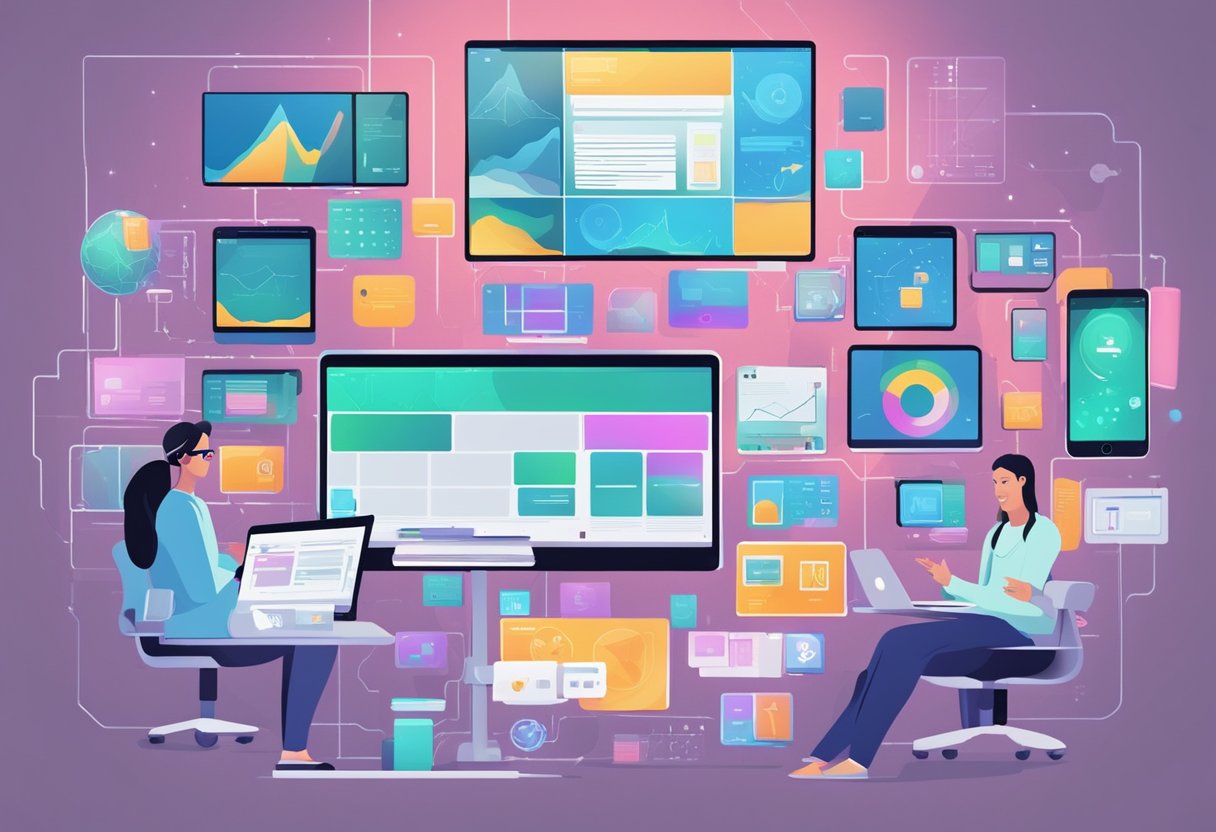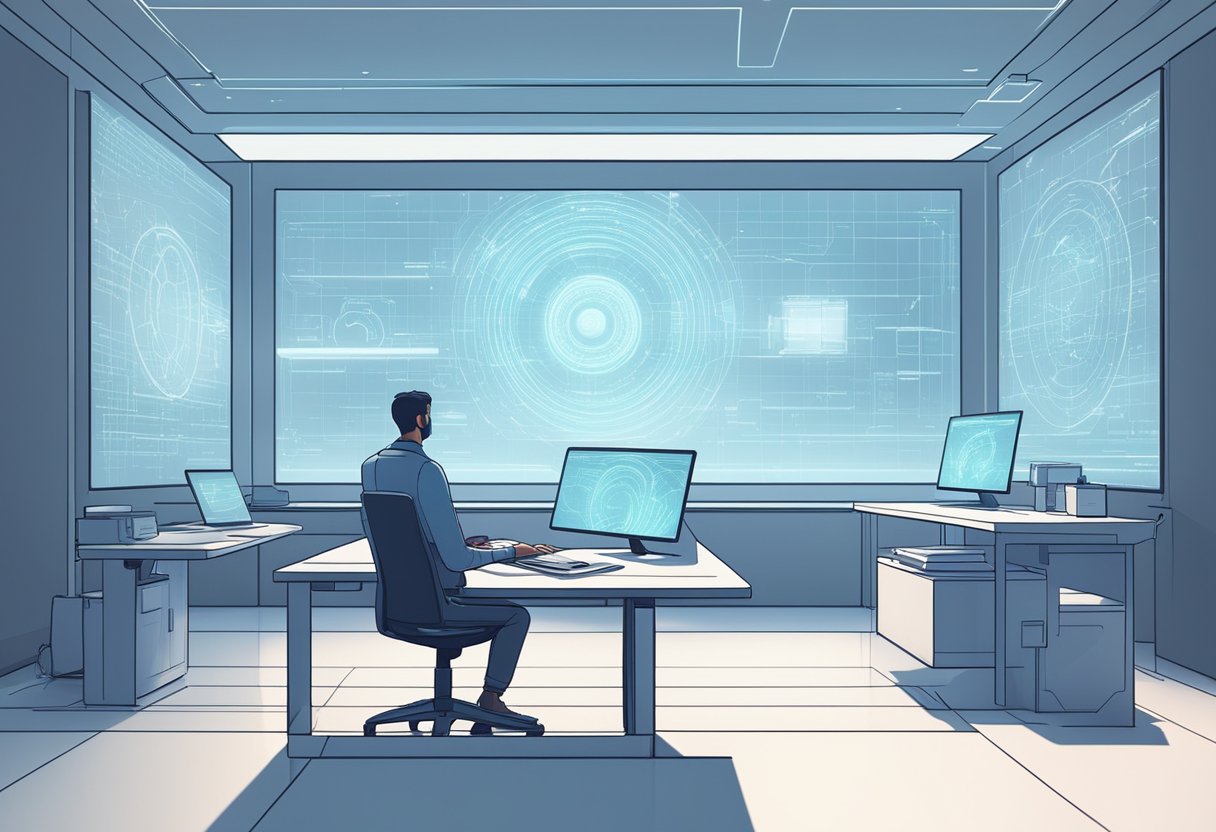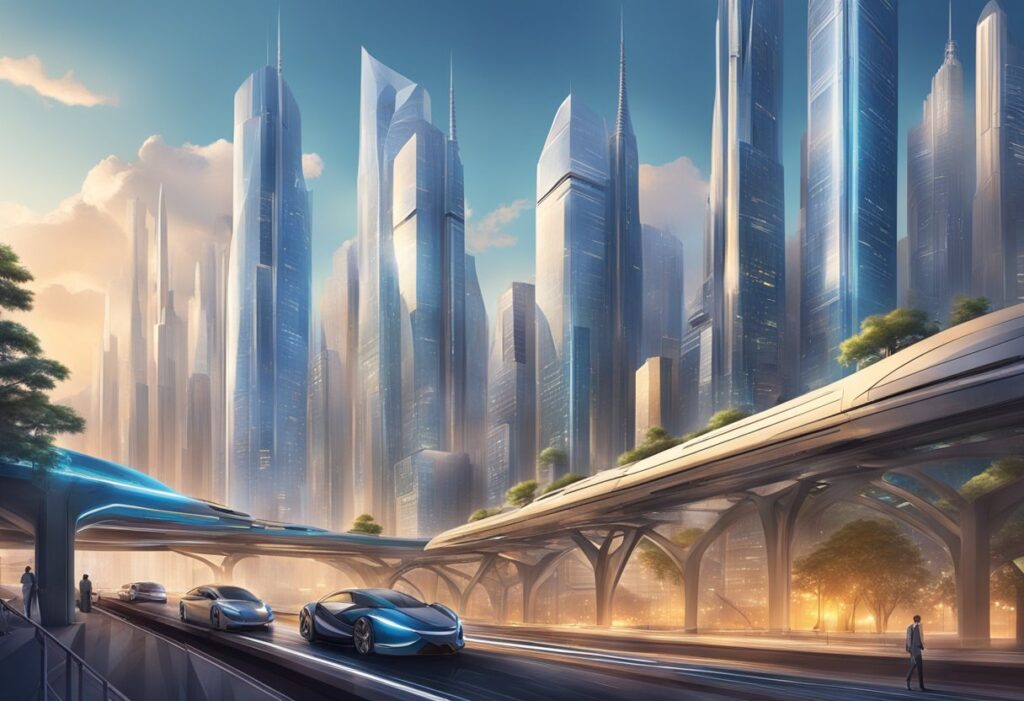In 2025, AI Storyboard Generators are transforming the way stories are visualized and shared across various industries, from film to education. AI technology now seamlessly converts scripts into dynamic sequences of images, making the process faster and more efficient than ever before. As someone passionate about storytelling, I see how these tools can unlock new levels of creativity, allowing storytellers to focus more on their vision and less on the technicalities of drawing each frame by hand.
These AI tools are not just for professional filmmakers. They’re accessible to educators, marketers, and independent creators, offering features that cater to different needs. With options like collaborative editing and script-to-board transitions, AI Storyboard Generators make it easy for teams and individuals to conceptualize and refine their projects effortlessly.
As AI continues to develop, its role in storytelling will likely expand, introducing even more possibilities for innovation. The future looks promising for content creators who embrace these tools, optimizing both creativity and productivity. For more insights, visit https://ltx.studio/.
Key Takeaways
- AI storyboard generators enhance creativity and efficiency.
- These tools support both professional and educational use.
- AI’s role in storytelling will continue growing.
Emergence of AI in Storyboarding
AI technology is rapidly changing the way we create storyboards. It’s enabling faster production and enhancing creativity in fields like filmmaking and marketing. Below, I explore significant advancements that AI brings to storyboarding.
AI Filmmaking Platform
The integration of AI into filmmaking platforms has transformed pre-production tasks. These platforms can generate visual sequences effortlessly, aiding directors and producers in visualizing scenes before shooting begins. This advancement cuts down the hours spent on manual drawing and allows filmmakers to focus more on storytelling.
I find that AI tools are particularly handy for creating explainer videos and ads where swift, precise visuals are needed. AI filmmaking platforms provide storyboard templates, making it easier for even non-professionals to develop visual content.
AI-Powered Visual Storytelling
I’ve noticed that AI-powered tools are enhancing storytelling by offering dynamic visual options. These tools enable creators to test different narrative paths and visualize ideas with ease. AI helps film and content creators bring imaginative scenarios to life without the need for extensive artistic skill.
With AI, I can seamlessly transform a script into a rough storyboard, letting the technology handle character creation and scene development. The availability of AI storyboard generators bridges gaps for those who might lack traditional drawing capabilities, making visual storytelling more accessible.
Generative AI Technology
Generative AI technology is crucial in the storyboarding process. It allows for creating customized visuals tailored to unique project needs. This approach fosters greater creative control and aligns with users’ specific preferences, such as style or mood.
In my experience, these AI-driven systems can automatically generate storyboard elements like backgrounds and scenes based on user input. This efficiency speeds up the creative process, providing more time for refining the narrative details. As the technology advances, it promises even more creative possibilities for visual media creators.
The Storyboard Generation Process
Creating storyboards with AI is revolutionizing how we visualize stories. By automating script conversion, character generation, and video production, this technology makes storytelling faster and more efficient.
Script-to-Storyboard Conversion
The first step in AI storyboarding involves converting a written script into visual scenes. I often start by uploading the script to the software, which analyzes the text to generate a sequence of scenes. This process involves identifying key elements of the story, such as characters, locations, and dialogues. The AI then transforms these into digital frames. This automation not only saves time but also ensures consistency across the storyboard. Script-to-board capabilities enable seamless integration between writing and visualization, a crucial aspect for filmmakers and content creators looking to streamline their pre-production process.
AI Character Generator
Developing characters is essential to storytelling. When using an AI character generator, I can create unique and dynamic characters easily. The tool allows me to customize aspects like appearance, emotions, and movements, offering a personalized touch to each character. These generators use algorithms to ensure that characters not only fit the storyline but also offer a visual richness that enhances storytelling. The result is a set of characters that can react and interact naturally within scenes, making them integral to moving the story forward. With AI, character customization becomes a straightforward yet powerful tool in bringing stories to life.
AI Video Production
After defining the script and characters, I move to AI video production, which streamlines the creation of animated sequences. Using AI, I can quickly produce videos that integrate visuals, sounds, and effects to bring each scene to life. The AI arranges scenes automatically based on the script, allowing for rapid iteration and refinement. This stage focuses on ensuring the story is cohesive, with smooth transitions and coherent pacing. AI video production tools offer capabilities that were once only available in professional studios, making high-quality production accessible to creators of all levels. This democratization of technology has made storytelling more dynamic and accessible than ever before.
Enhancing Creativity and Efficiency
In 2025, AI storyboard generators are transforming how I approach both creativity and efficiency in video production.

These tools enable me to develop narratives swiftly, streamline content creation, and use advanced filmmaking techniques.
AI-Driven Storytelling Tools
AI-driven storytelling tools offer me the chance to create engaging narratives quickly. By using machine learning algorithms, these tools analyze vast amounts of data to suggest unique and engaging plot lines. I can receive prompts for character development, plot twists, and settings, making the creative process both faster and more innovative.
I find that these tools also allow for real-time collaboration with other creators, enhancing shared creativity. By using AI, I can explore multiple storytelling styles and find the best fit for my project, ensuring a dynamic and appealing storyline.
Content Creation Automation
Automation in content creation helps me save significant time in the production process. AI algorithms generate scripts, dialogue, and even visual elements, reducing manual tasks. I can focus more on refining ideas rather than getting bogged down with repetitive tasks.
AI tools assist in customizing content for different platforms. Whether I’m creating a video for YouTube, advertising, or social media, I can tailor the content efficiently. This automation not only boosts productivity but also ensures high-quality output with consistent branding and messaging.
Advanced Filmmaking Tools
Advanced AI filmmaking tools are reshaping my approach by providing new ways to edit and produce content. From smart video editing features to automated storyboarding, these tools enhance both creativity and precision in my projects. I can easily manipulate and arrange visual content, ensuring each frame aligns with my creative vision.
These tools enable sophisticated visual effects and precise control over design elements. I find myself gaining insights into the filmmaking process that were previously unattainable, allowing for a more streamlined and enjoyable production experience. Through AI, I can experiment and iterate faster, embracing a more fluid and adaptive creation process.
Collaboration in AI Storyboard Generation
In 2025, AI storyboard generators have changed how teams collaborate on creative projects. Emphasis on real-time communication, collaborative editing features, and specialized AI tools have streamlined the creative process, making it more efficient and accessible.
Real-Time Collaboration
I find real-time collaboration in AI storyboard generation to be a game-changer. With cloud-based software, teams can work together from anywhere. This means I can join a session and make updates that everyone sees instantly. It’s perfect for creative brainstorming and refining ideas on the spot. No need to send files back and forth or wait for feedback.
This setup ensures that everyone’s input is captured in real time, reducing the risk of miscommunication. It also helps speed up decision-making, as adjustments can happen live. This immediacy fosters more dynamic creativity and allows for innovation without the usual delays of traditional methods.
Collaborative Video Editing
In the realm of video editing, collaboration takes on a new dimension. With AI tools, I can now edit videos alongside my team members seamlessly. These tools offer shared access to edits, so we can work simultaneously on different sections of a project. This synchronicity saves time and minimizes conflicts over which version is current.
AI aids in automatically organizing and assembling clips, allowing us to focus more on creative input rather than manual tasks. This shared editing environment enhances the creative process, as ideas develop organically with multiple perspectives contributing at once. It ensures that the final product benefits from a well-rounded vision.
AI Pitch Deck Generator
The AI pitch deck generator complements storyboard creation by providing a polished way to present concepts to stakeholders. When collaborating on a project, having a strong pitch deck is crucial. This tool automatically drafts slides based on the storyboard, making it easy for me and my team to create compelling presentations.
By utilizing AI insights, these decks are visually engaging and data-driven, aligning perfectly with the storyboard. They highlight key points clearly, helping in persuasive communication with clients or partners. This integration enhances the pre-production phase by ensuring all creative assets are aligned and ready for pitching or further development.
The Future of AI in Film and Video Production
In film and video production, AI is revolutionizing how I create and edit content. It’s all about enhancing efficiency and enabling more creative freedom in my work.

Let me walk you through AI’s impact on filmmaking.
AI Video Editing Software
AI video editing software is transforming post-production. With tools that automate tasks like cutting, color correction, and audio enhancements, I can focus more on creativity. These software tools often feature intelligent algorithms that learn from my editing style. This means the more I use them, the better they understand my preferences.
Real-time collaboration: Many AI editing programs enable seamless collaboration with team members, even in different locations. This is particularly beneficial for large-scale projects.
Speed and efficiency: By cutting down on repetitive tasks, AI tools reduce the time I spend on editing. This lets me concentrate on storytelling and artistic elements.
Visual Storytelling Tools
AI-powered visual storytelling tools are pushing boundaries by offering features that enhance the narrative. These tools allow me to experiment with various scenes or character animations effortlessly. I find it helpful in pre-visualization processes where I can basically sketch out scenes digitally.
Some tools even generate 3D environments and dynamic lighting effects, which are useful for creating compelling visual sequences. This helps when crafting scenes that require a lot of imagination and planning.
Ease of use: User-friendly interfaces make these tools accessible, even for those not deeply familiar with complex software.
Flexibility: AI enables me to easily swap out characters or backgrounds, providing fresh perspectives in storytelling.
Automated Editing
One of the standout features of AI in this field is automated editing. By using AI, I can automatically assemble rough cuts of a film based on the script or storyboard. This technology saves a lot of time and helps in identifying the overall flow early in the editing process.
Automated editing includes features like smart scene detection, where AI identifies and categorizes different scenes based on visual and audio cues.
These edits are not only faster but also ensure consistency throughout the project, which is critical in maintaining narrative flow and style.
By allowing more time for creative decisions, AI is reshaping how I approach film production tasks.
Frequently Asked Questions
In exploring AI storyboard generators, I’ve come across exciting tools providing advanced features, impressive transformations of scripts to visuals, and data privacy considerations. Here’s what I’ve found out about the current offerings and future expectations.
What are the top-rated AI storyboard generators available in 2025?
In 2025, several AI storyboard generators stand out. They offer a range of features to make creating storyboards easier and more visually appealing. These tools cater to various users, from filmmakers to advertisers, allowing efficient production of story sequences.
How does an AI storyboard generator transform a script into visual storyboards?
AI storyboard generators use algorithms to interpret scripts and ideas, quickly converting them into a series of visual scenes. By analyzing the narrative, these tools automatically suggest visuals, ensuring that the story flow is consistent with the intended script.
Are there any free AI storyboard generators that offer professional-quality features?
Yes, there are free options available that offer professional quality. These tools can be effective for those on a budget while still providing the necessary features to create high-quality storyboards. They help streamline the creative process without significant financial investment.
What advancements in AI storyboard technology can we expect to see in 2025?
In 2025, I expect continued advancements in AI technology. These may include improved accuracy in visual interpretation, more intuitive user interfaces, and better integration with other creative tools. These changes aim to make storyboard generation even more seamless and efficient.
How can I determine if an AI storyboard generator maintains the privacy and security of my data?
To ensure data privacy and security, it’s important to review the generator’s privacy policy. Look for tools that use encryption and have clear terms about data use. Understanding their commitment to user privacy can help mitigate any concerns about data security.
What are the limitations and strengths of using an AI for storyboarding compared to traditional methods?
AI offers efficiency and speed that traditional methods can’t match. It reduces the time needed to create detailed storyboards. However, it might lack the personal touch or artistic nuance a human can provide. It’s a balance between speed and creative personalization.
